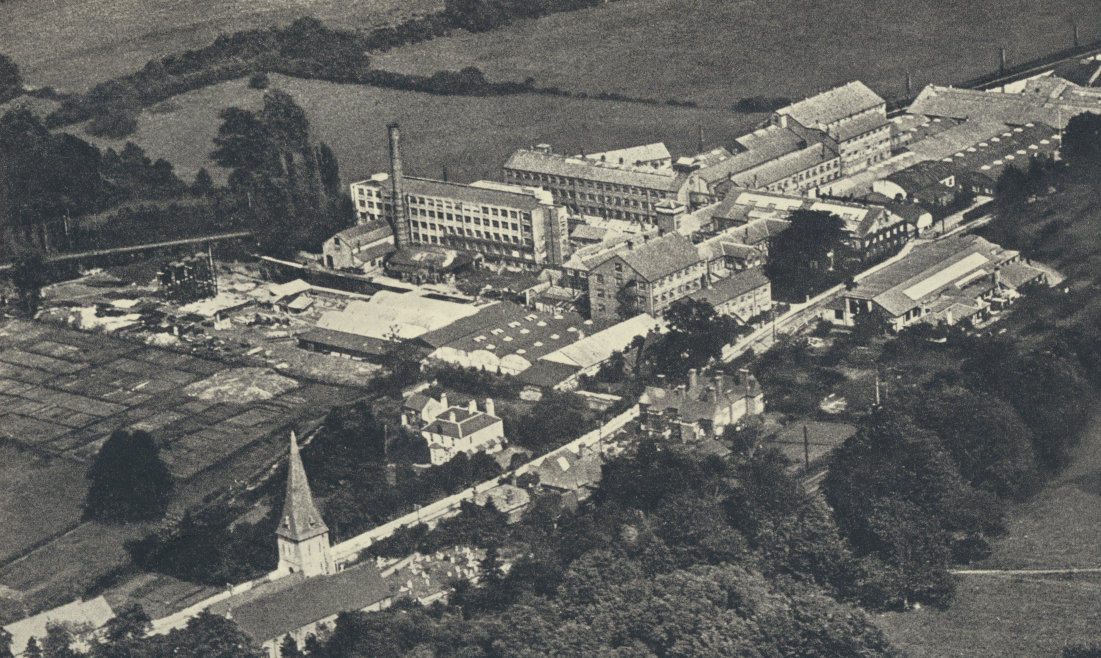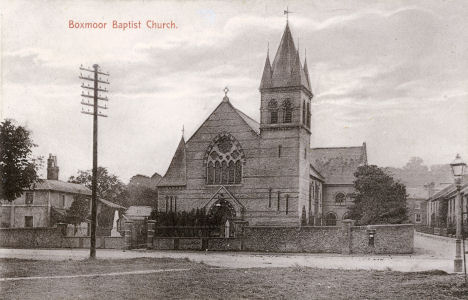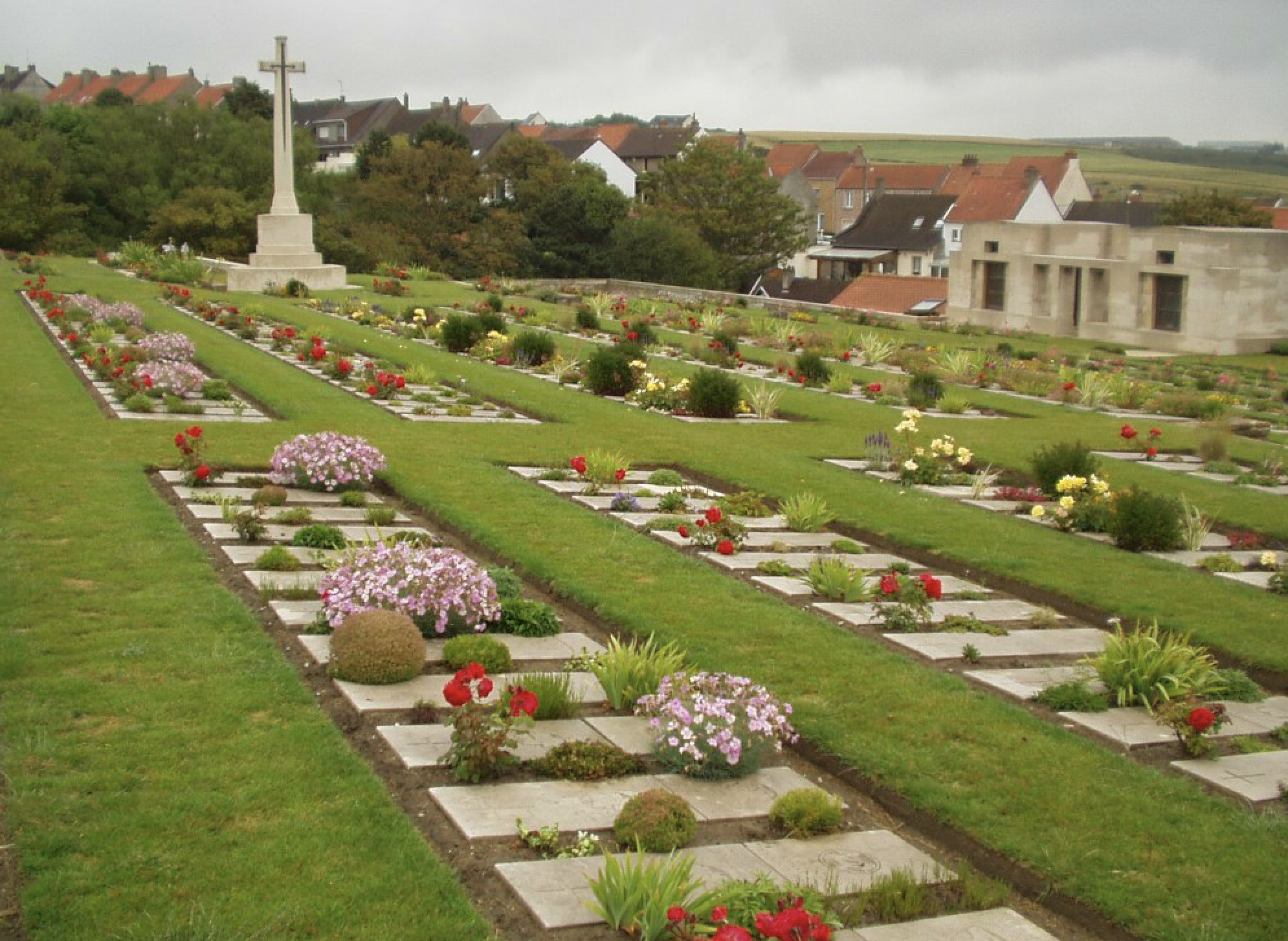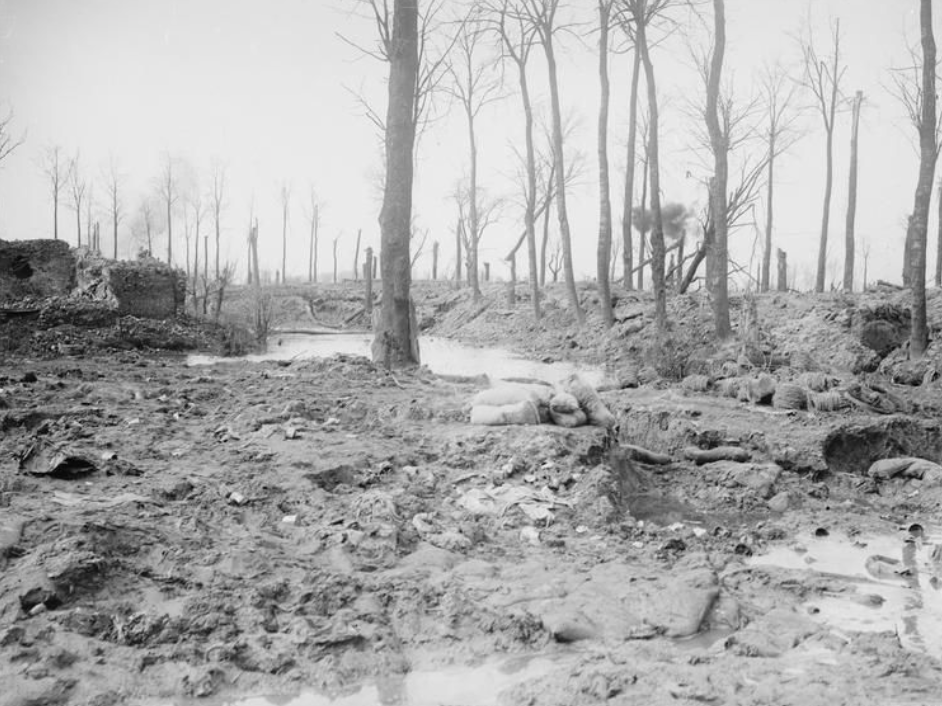Fallen in January 1916:
Albert Harry Reneville
Horace Victor Verdon Clarke
Horace Harrison
ALBERT HARRY RENEVILLE
16464 Lance Corporal
"C" Coy. 8th Bn., Bedfordshire Regiment
Died of Wounds Saturday, 8th January 1916
Remembered with Honour, Wimereux Communal Cemetery, Nord Pas de Calais, France, Grave I.L.2.
Albert Harry Reneville was born in Hackney, Middlesex on Saturday, 17th September 1887 the third child of Oscar Jerome Reneville and Grace Harriet Johnson. He was baptised on Sunday, 9th October 1887 at St Michael and All Angels in Hackney. Oscar and Grace had eleven children, two of whom died. The children were; Grace Mary Ann, Oscar Edward, Albert Harry, Harry Emille, Alice Jessie, Emille Albert, Nellie, Florence Lilian, Walter and Ivy Elizabeth. Albert’s oldest sister Grace died in 1910.
Albert’s Grandfather was a Carpenter from Normandy, France who came to live in West Ham in east London in the 1840’s. French names were therefore common in the family and two of Albert’s uncles were Napoleon and Emile, along with the Emilles and Florence amongst his siblings.
In 1901 the family lived at 55 Palace Road, Hackney in east London and thirteen-year-old Albert and his brother Oscar worked as ‘Tooth Brush Polishers’. The modern toothbrush had been invented in 1770 by William Addis whilst in Newgate prison. By 1840 his company was mass producing toothbrushes for the world market in east London under the name ‘Wisdom’. The brush handles where made from bone, sometimes ivory, and ‘polishing’ the handles was one of fifty-three processes in the increasingly sophisticated manufacture. The Addis family owned Wisdom Toothbrushes until 1996 and the company still produces over seventy million toothbrushes a year in the UK. Albert’s father Jerome was a ‘Boot Finisher’ and as the name suggests, his job was the last stage in the process of hand making boots and shoes.
By 1911
Albert, aged twenty-three, was boarding at the home of Samuel Dayton at 98
Apsley End having moved to the area to work as a Paper Packer at Dickinson
& Co. Ltd. in Apsley Mills. It was here that he met a Boxmoor girl, Daisy
Orchard, who worked at Dickinsons as a Machinist in the Envelope Department and
they married the following year in the Spring of 1912.
Albert and Daisy moved to Boxmoor after their marriage and lived at 1 Russell Place opposite to Boxmoor Baptist Church. It was here that their only child Ivy Daisy Reneville was born in early 1914. Following Albert’s death, Daisy remarried in 1921 and with her new husband, Walter Freeman and daughter Ivy, she emigrated to Canada in the same year.
At the end of the Great War there were some 240,000 widows in the UK. Although most of them were granted a war pension, with a supplement for children, these were insufficient to cover daily needs and many of the women topped up their incomes by working or relied on help from their families. In many cases the widows remarried even though this meant partial or total loss of their war pension.
On the outbreak of war, Albert enlisted at Watford with the Bedfordshire Regiment in October and he was posted to the newly formed 8th Battalion at Bedford. The 8th Battalion was a "Service" battalion that was formed specifically for the duration of the war as part of 'K3' - Lord Kitchener's 3rd 'call to arms' for another 100,000 men. It was attached to the 71st Brigade of the 24th Division and remained there for a year, before transferring twice to end up with the 16th Brigade of the 6th Division.
Albert undertook his basic training initially in Brighton for a brief spell, but then for almost seven months in the sprawling New Army training area around Woking in Surrey. Finally, the increasingly restless men of the 'Hungry 8th' (a nickname used in a letter home from Private 19861 Leslie Worboys) received orders to mobilise and prepared to ship out. At 11pm on the 28th August 1915, the Battalion boarded the troop trains at Chobham Station and left for Dover. After transferring straight onto troop ships, they arrived at Boulogne early on the 30th August 1915.
Albert soon
saw action and fought in The Battle of Loos in September. He was also in the
line at Forward Cottage trenches north of Ypres when the Army experienced the
first German use of Phosgene gas on the 17th December and hundreds
of men were lost in the attack.
January 1916 started with very wet and windy weather and by the 5th and 6th the 8th Battalion were experiencing very heavy shelling by the Germans. It seems most likely that Albert received his mortal wounds on one of those days. He was admitted to the Australian Hospital at Wimereux near Boulogne but sadly died of his wounds on Saturday, 8th January 1916.
Apsley Mills where Albert and Daisy worked (Photo: "The Endless Web: John Dickinson & Co Ltd 1804-1954" , Joan Evans, 1955)
Boxmoor Baptist Church opposite Albert and Daisy's first home together (Photo: www.hertfordshire-genealogy.co.uk)
The Australian Hospital at Wimereux, France (Photo: https://boothancestry.wordpress.com/)
John Dickinson & Co. Ltd. War Memorial, Apsley End (hoto: Traquair Photography)
Wimereux Communal Cemetery, Nord Pas-de-Calais, France (Photo: CWGC)
Albert was the first soldier from Hemel Hempstead to die in 1916.
He is commemorated on the Dickinson & Co. memorial at Apsley.
Albert is Remembered with Honour in Wimereux Communal Cemetery, Nord Pas de Calais, France, where he is interred in grave I.L.2.
He was 28 years old when he died.
Albert was eligible for the 1914 – 15 Star, the British War Medal and the Allied Victory Medal.
HORACE VICTOR VERDON CLARKE
10141 Private
1st Bn, Wiltshire Regiment
Killed in Action Wednesday, 12th January 1916
Remembered with Honour, Ploegsteert Wood Military Cemetery, Hainault, Belgium, Grave I.D.2.
Horace Victor Verdon Clarke, known to his family as Victor, was born on Thursday, 22nd September 1892 at Marylebone in London. He was baptised along with his brother Frank at St Mary’s Church Lambeth on Sunday, 23rd August 1896. Victor was the youngest child born to John Clarke and Mary Ann Verdon. He had six siblings; Edith Sarah Caroline, William Daniel, Laura Elizabeth Louise, Gertrude, Alice Ellen and Frank John.
Victor’s brother Frank also fought and died in the Great War. He was a Sapper with the 119th Coy. Labour Corps, Royal Engineers and he died almost a year after the war ended on Wednesday, 29th October 1919. He is Remembered with Honour at Tincourt New British Cemetery, Somme, France in Grave IX.C.5. The inscription on his headstone reads “THY WILL BE DONE ON EARTH AS IT IS IN HEAVEN”. It is not known how Frank died.
When Victor was born, the family lived at 42 Catherine Street, Covent Garden, subsequently where the Strand Theatre stood (now the Novello Theatre). His father worked as a ‘Shopman’ in a newspaper office and his three oldest siblings were employed in the drapery and millinery trade.
By 1901 the family had moved to 51 Newport Street in Lambeth a stone’s throw from the River Thames and a short walk from the Oval cricket ground. Victor’s father John was working as a Window Cleaner on his own account by this time. Victor was very much the baby of the family and there was a seven-year age gap between him and his immediate sibling Frank and twenty-three years between him and his eldest sister Edith.
By 1911 John, still plying his trade as a Window Cleaner, had moved his family back to Covent Garden where it now resided at 15 York Street (now Tavistock Street) directly opposite the house where Thomas de Quincy, the English essayist, wrote his most famous work, ‘Confessions of an Opium Eater’ the autobiographical account of his laudanum addiction. Victor now aged eighteen is working as a Compositor’s Apprentice. At that time his apprenticeship would have been for seven years starting age fourteen and as a ‘print trade’ would have been much sought after and lead to secure employment. Victor could ultimately earn about 40 shillings a week as a Compositor equivalent to £161 today and a higher than average wage in 1914. It was the amount a Lieutenant in the Army earned. The downside of Victor’s apprenticeship was that his articles forbade him to marry until his time was served.
On the
outbreak of war Victor enlisted with the Duke of Edinburgh’s (Wiltshire)
Regiment, attesting in Marylebone in September 1914. He was twenty-two and
living with his parents at 5 Grosvenor Terrace, Boxmoor where they had moved
there sometime after 1911.
He was initially sent to Weymouth to train with the 3rd (Reserve) Battalion, before being sent to France to join the 1st Battalion on the 11th December 1914. The 1st Battalion had gone to France in August 1914 under the orders of 7th Brigade in the 3rd Division and Victor joined it on the 18th December as part of a draft of 110 men at Locre, six miles south west of Ypres.
Victor saw action with the 1st Battalion during the Winter Operations of 1914 and 15, the first attack at Bellewaarde and the actions around Hooge in September. By November 1915 Victor was at Ploegsteert Wood where he remained until January 1916.
Victor was
assigned to a large party of men to carry out trench repair work following
German shelling. The Battalion War Diary recorded the events: "PIGGERIES 12th (Jan) A large
party was required for work in the evening upon the breastwork behind trench
121. There were four casualties Pte. Parsons was killed. Ptes Hall and Clark
died of their wounds and Pte Hawkins was wounded. This was due to a machine gun
opening fire from the enemy trench opposite trench 123"
Victor died of his wounds on Wednesday, 12th January 1916.
Victor is Remembered with Honour in Ploegsteert Wood Military Cemetery, Hainault, Belgium, Grave I.D.2. The inscription on his headstone requested by his mother Mary Ann reads: “BLESSED ARE THE PURE IN HEART FOR THEY SHALL SEE GOD”.
He was 23 years old when he died. Victor was eligible for the 1914-15 Star, the Bristish War Medal and the Allied Victory Medal.
1st Bn. Wiltshire Regiment Cap Badge WW1
Ploegsteert Wood where Victor died (Courtesy :IWM)
Pte. Victor Clarke's Headstone, Ploegsteert Wood Military Cemetery, Hainault, Belgium (Courtesy: Traquair Photography June 2016)
HORACE HARRISON
17436 Private
"B" Coy. 7th Bn., Bedfordshire Regiment
Killed in Action Friday, 21st January 1916
Remembered with Honour, Meaulte Military Ceremony, Somme, France, Grave B.32
Horace Harrison was born in Hemel Hempstead on Tuesday, 20th May 1879 the fourth child and third son of Joseph Harrison and Emma Lovegrove. Joseph and Emma had a total of eight children, and Horace’s siblings were: Sophia, Joseph, George, Emma, Jane, Ethel and the youngest, Mary Alice. Horace’s father Joseph died in 1897 and his older brother, also Joseph, died in 1905 aged thirty.
The Harrisons lived on Puller Road when Horace was born, and he started his education at the nearby Boxmoor JMI School entering the school on 15th February 1886. Horace successfully completed Standards I to VI over the next six years leaving school on the 5th March 1892 to begin work in the Watercress trade.
Horace’s family
were heavily involved in the thriving watercress business with both Joseph and
Emma working as ‘Growers’ for most of their lives. The boys in the family also
entered the trade as either ‘Watercress Salesmen’ or ‘Labourers’, whilst some
of the girls worked as ‘Watercress Bunchers’. Watercress growing had begun to
thrive in Hemel Hempstead after the coming of the railway in 1837 which allowed
fresh daily deliveries of the crop to London. The Harrison’s worked around the
Chaulden area and lived nearby at Fishery Cottages for many years.
Horace first enlisted in the Army on 20th December 1895 when he claimed to be eighteen on attesting although he was only sixteen. At his medical he was described as being 5 feet 5 inches tall, 116 lbs (just over 8 stone), with a ‘fresh’ complexion, brown eyes and brown hair. Interestingly, he is adjudged to have an age physically equivalent to ’17 years and 7 months’ which probably guaranteed his acceptance into the Regiment. He joined “G” Company, 4th Battalion Bedfordshire Regiment, a Militia battalion, and initially signed up for four years. He received 49 days of drill on enlistment but, only three months later he is discharged from the Militia having paid £2.0.0. to buy himself out on the 23rd March 1896.
Horace continued in the Watercress trade and by 1911 he had moved to work in Aby, near Alford in Lincolnshire as a ‘Watercress Cutter’ and was boarding at the home of Henry and Anne Fisher. He was still in Lincolnshire on the outbreak of war, but he returned to Hertfordshire and enlisted with the Bedfordshire Regiment once more, attesting in Watford in October 1914.
He was
posted to the 7th Battalion Bedfordshire Regiment which was formed
at Bedford in September 1914, as part of 'K2' - Lord Kitchener’s second call to arms for another 100,000 men. The Battalion was attached to the 15th (Scottish) Division whilst training and then in February 1915, it was moved
into the 54th Brigade of the 18th (Eastern) Division.
Gadespring watercress beds in Boxmoor where the Harrisons worked (Courtesy: Boxmoor Social Club)
Meaulte Military Ceremony, Somme, France (Courtesy: CWGC)
On completion of his training Horace was sent to France disembarking at Le Havre on the 3rd September 1915. He joined the battalion a few days later and was soon in action near Fricourt two miles east of Albert. Over the next four months the battalion was involved in fighting in the Fricourt area and experienced daily shelling and sniping in the trenches although casualties were relatively light.
In January 1916, hostilities continued much as they had for the preceding months but with the addition of regular night patrols by the 7th Battalion. ‘Tit for Tat’ shelling, mortar and rifle grenade firing meant that soldiers on each side had to be constantly on alert. On the 21st January the battalion war diary records the following: "..enemy fairly active with their trench mortars, one landing in a small dug out in 77 trench containing 4 persons. 1 N.C.O. & 1 Man killed."
The man killed on Friday, 21st January 1916 was Horace Harrison.
Horace is Remembered with Honour in Meaulte Military Cemetery, Somme, France where he is interred in Grave B.32. The inscription on his headstone requested by his mother Emma reads: “REST IN PEACE, BELOVED ONE”.
He was 36 years old when he died. Horace was eligible for the 1914-15 Star, the British War Medal and the Allied Victory Medal.







